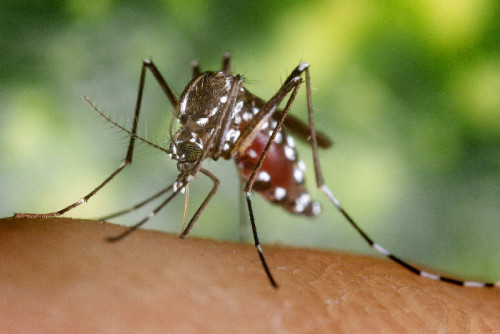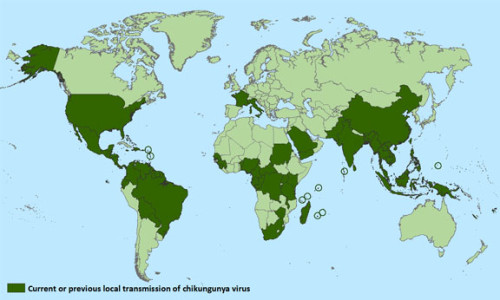Last month I wrapped up a trip to Barbados. Having heard that Chikungunya was prevalent in the Caribbean, I searched a bit and confirmed that Barbados was in the midst of a outbreak.
Medical Disclosure – I am not a doctor, so please use this as a guideline and consult your doctor to discuss best prevention methods if you are traveling to a hot spot area.
To prepare for my trip I stocked up on some carry-on sized mosquito repellent and packed some light long-sleeved shirts and pants. Fortunately, once on the island I lucked out as we visited during an unusually dry time which temporary helped with the mosquito population as did strong 30mph winds gusts. Mosquitoes are only active in little to no wind.
In the end, I thankfully didn’t get bit, and in fact I didn’t see a single mosquito.
So what is Chikungunya, how do you get it, where is it prevalent, and most importantly, how do you prevent it?
According to the CDC the Chikungunya (pronunciation: chik-en-gun-ye, derived from the Makonde word meaning “that which bends up”) virus is transmitted to people via the Aedes mosquito. This species usually only bites in the daytime.
What are the symptoms?
- Symptoms usually begin 3-7 days after being bitten. The most common symptoms are fever and joint pain.
- Most patients feel better in days, though in some people joint pain may persist for months.
- Other symptoms may include headache, muscle pain, joint swelling, or rash.
Where is Chikungunya prevalent?
In addition to the Caribbean, travelers to Latin/South America, Africa, Asia, and islands in the Indian Ocean and Western Pacific (Lindsay Lohan was infected in Bora Bora) are at risk.
The Pan American Health Organization (PAHO) publishes a weekly list with the number of confirmed and suspected cases by country. Prior to our trip, I was checking this site each week as the results were released to see if cases were on the rise or subsiding (scroll down to the data, maps, and statistics section).
A good ole fashioned Google search of your destination is your best bet to get the latest news about the spread of the virus.
What can you do to prevent getting Chikungunya?
- In your hotel, keep the doors shut, turn down the air conditioning as low as you can stand it, and turn the ac fan on high to circulate the air.
- Wear long-sleeved shirts and long pants when you aren’t wearing mosquito repellent.
- Apply sunscreen first, then mosquito repellent.
- The CDC recommends repellents containing DEET, picaridin, IR3535 (Skin So Soft), oil of lemon eucalyptus and para-menthane-diol products.
Which mosquito repellent should you use?
While most people use DEET products, I personally use picariddin.
The EPA classifies picariddin as a biopesticide, meaning its derived from natural materials. In this instance pepper plants. In well documented studies its been shown to be just as effective as DEET products. It also won’t harm plastics, has little to no smell, and is less oily.
Oil of lemon eucalyptus is also a biopesticide and has also been shown to be just as effective as DEET products. Unlike picariddin, it has a stronger smell (some like it, I don’t) and isn’t safe to apply to kids under 3.
I personally use and travel with Natrapel. Its comes in a handy 3.4 oz. size perfect for carry-ons.
How do you know if you have Chikungunya and what’s the cure?
If you believe you have chikungunya, the CDC recommends seeing your doctor who will perform a blood test to confirm the diagnosis.
Unfortunately, there is no specific medication to treat chikungunya. Instead, doctors will recommend rest, abundant fluids to prevent dehydration, and medications such as ibuprofen, naproxen or acetaminophen. It’s recommended not to take aspirin as it might make symptoms worse.
The responses below are not provided or commissioned by the bank advertiser. Responses have not been reviewed, approved or otherwise endorsed by the bank advertiser. It is not the bank advertiser's responsibility to ensure all posts and/or questions are answered.

